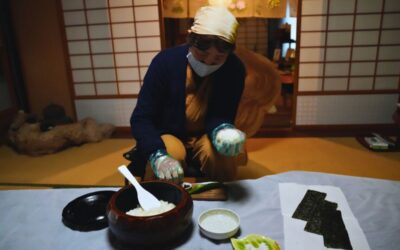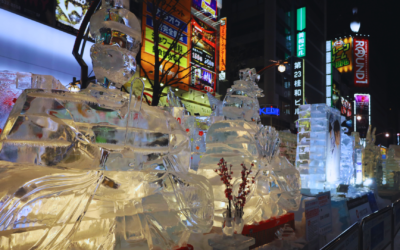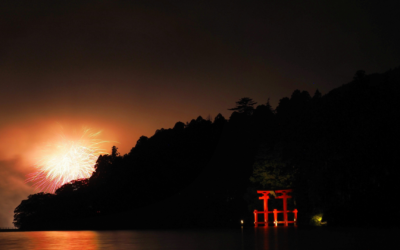Living in Tokyo for a while now, I’ve come to appreciate the beauty of the city’s endless discoveries. No matter how long you’ve been here, there’s always something new around the corner. And one of the best ways to experience Tokyo’s many layers is by hopping on the Yamanote Line—a loop that connects so many of Tokyo’s most exciting neighbourhoods, making it essential for anyone wanting to explore the city.
The Yamanote Line (or “Yamanote-sen” in Japanese) is a 34.5-kilometre circle that wraps around central Tokyo, linking major hubs like Shibuya, Shinjuku, and Tokyo Station. It’s more than just a train line; it’s a lifeline. Millions of people use it EVERY DAY, from salarymen commuting to work, to school kids heading home, and, of course, tourists like you (and sometimes me) zipping around to see the sights.
The trains are easy to spot with their distinctive green stripes, and they’re impressively clean and efficient—like most things in Japan. You’ll find that announcements are made in both Japanese and English, so even if you’re new to Tokyo, navigating your way around is straightforward. The trains run like clockwork, arriving every few minutes, so you never have to wait long.
Be mindful of rush hour, though. Weekdays between 7:30-9:00 a.m. and 5:00-7:00 p.m. are when the trains are packed to the brim with commuters. If you’re not keen on experiencing the infamous Tokyo train crush, it’s best to plan around these times!
Now, for today’s itinerary, we’ll be making three of my favourite stops on the Yamanote Line: Harajuku, Akihabara, and Ueno. These three places offer a perfect mix of Tokyo’s famous fashion, pop culture, and cultural heritage. Let’s get started!
Stop 1: Harajuku – Fashion, Parks, and a Bit of Culture
Start your day at Harajuku Station, just two stops from Shibuya or three from Shinjuku. Harajuku is the epicentre of youth fashion in Tokyo, and the energy here is contagious. Even after all these years, I still get excited when I step off the train.
Takeshita Street – Tokyo’s Trendiest Shopping Spot

When you exit Harajuku Station, Takeshita Street is right in front of you. It’s packed with shops that sell everything from trendy streetwear to quirky accessories and kawaii (cute) fashion.
If you’re after some classic Harajuku style, check out WEGO for affordable, colourful clothing (expect to spend around ¥1,500-3,000 per item). For more alternative fashion, head to BUBBLES or Nile Perch—their vintage-inspired pieces are iconic in the Harajuku scene.
Food lovers shouldn’t miss the famous Marion Crepes stand, where you can grab a delicious crepe filled with whipped cream, fruit, and even ice cream for about ¥500-700.

If you’re feeling adventurous, try the rainbow cotton candy from Totti Candy Factory, which costs around ¥800 and is basically Instagram gold.
Yoyogi Park – A Breather in the Heart of the City

After navigating the busy streets, walk for about 10 minutes from Takeshita Street to Yoyogi Park.
It’s a peaceful escape from the chaos and a favourite spot for locals to chill. On weekends, you’ll see groups practising everything from dance to martial arts. Grab a drink from a vending machine (there’s one on nearly every corner), find a bench, and just relax while watching the city pass by.
Yoyogi is also a great place for a picnic, so if you’ve grabbed snacks from Takeshita Street, this is the perfect spot to enjoy them.
3. Meiji Shrine – A Peaceful Escape

Just next to Yoyogi Park is the entrance to Meiji Shrine. Walk through the giant torii gate and suddenly, the noise of the city fades away, replaced by the sounds of the forest that surrounds the shrine. It’s about a 15-minute stroll through the peaceful grounds to reach the shrine itself. Meiji Shrine is one of Tokyo’s most significant Shinto shrines, and the atmosphere here is serene. Don’t forget to wash your hands at the temizuya purification fountain before entering the shrine area.
You can buy an ema (wooden prayer plaque) for ¥500 to write your wishes on and hang at the shrine. It’s a beautiful way to leave a piece of yourself behind in Tokyo. After you’ve taken in the quiet beauty of Meiji Shrine, head back towards Harajuku Station—it’s time for the next stop!
Stop 2: Akihabara – Tokyo’s Tech and Pop Culture Heaven
From Harajuku, jump back on the Yamanote Line and ride about 20 minutes to Akihabara Station. This is the ultimate destination for tech enthusiasts and anime fans alike. Even after all these years, Akihabara still surprises me with its mix of cutting-edge gadgets and geek culture.
Explore Akihabara’s Anime and Electronics Stores
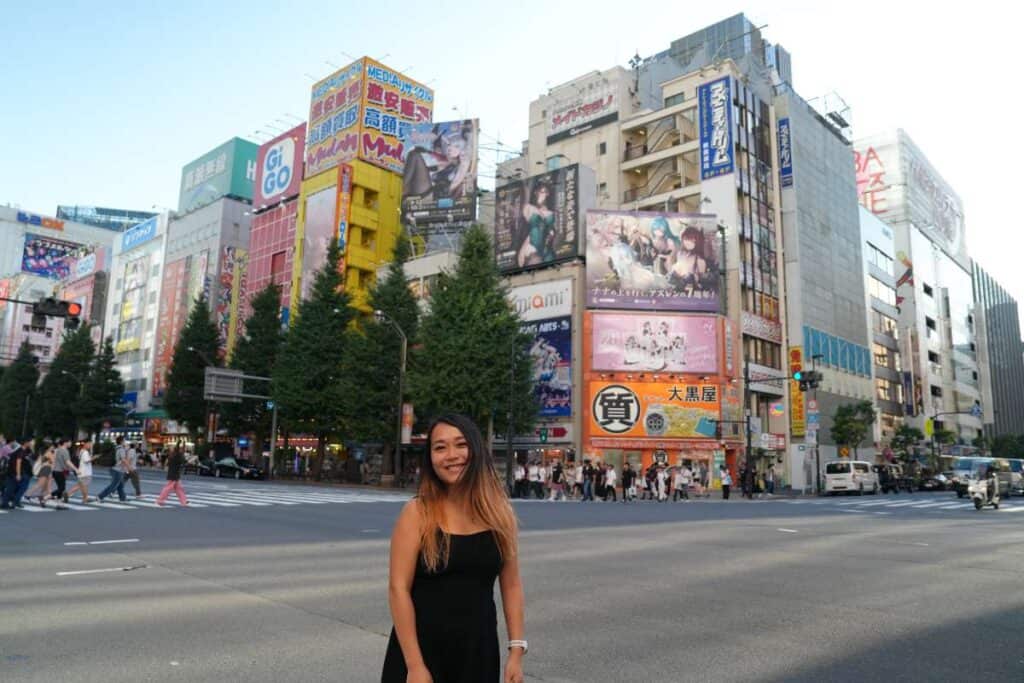
Step out of Akihabara Station and prepare to be dazzled by neon signs and multi-storey shops filled with anime, manga, and electronics. If you’re into anime, head to Animate Akihabara, one of the largest anime stores in Japan, with floors dedicated to manga, merchandise, and even DVDs (budget around ¥500-2,000 for cool souvenirs).
For electronics, Yodobashi Camera is a tech lover’s dream. It’s a huge multi-floor department store where you can find everything from the latest cameras to kitchen gadgets. Prices vary widely, but you can expect to pay around ¥1,500 for small electronics accessories or up to ¥50,000 for high-end tech gear.
Play Some Games at an Arcade

Head to one of the multi-floor game centres—such as Taito Station or Sega Akihabara—where you can battle it out on air hockey tables or try your hand at claw machines and rhythm games. Expect to spend about ¥100-200 per game, and don’t be surprised if you get lost in the fun for a while. The competitive energy and flashing neon lights make these arcades a must-do.
Leave Your Mark at Kanda Myojin Shrine
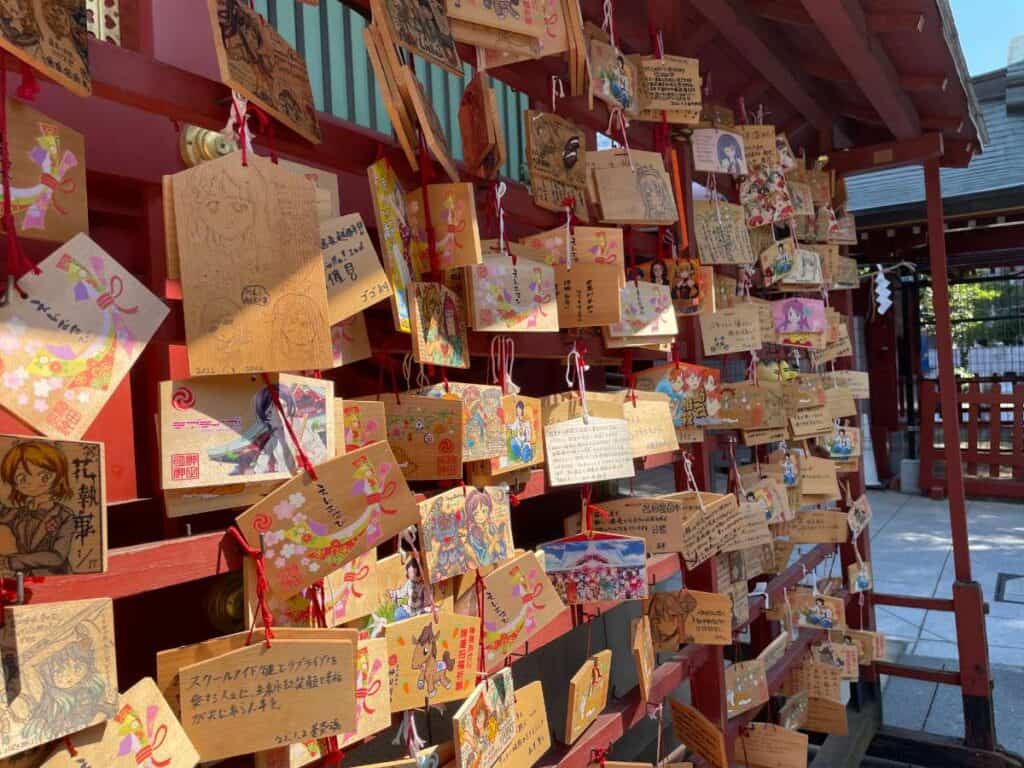
Take a short 10-minute walk from Akihabara’s hustle to Kanda Myojin Shrine, a hidden gem where anime and tradition meet. The shrine is famous for its connections to the anime culture, and you’ll find ema (wooden prayer plaques) decorated with fan art and anime-inspired designs.
Many visitors leave their own wishes on these plaques, which cost around ¥500-1,000. It’s a peaceful, cultural break from the bright lights of Akihabara and a unique way to experience Japan’s fusion of pop culture and spirituality.
Stop 3: Ueno – Tokyo’s Cultural Gem
From Akihabara, take the Yamanote Line for a short 5-minute ride to Ueno Station. Ueno is a mix of culture and nature, and it’s home to some of Tokyo’s most important museums and parks.
Ueno Park and Ueno Zoo

Once you step out of the station, follow the signs to Ueno Park, just a 5-minute walk away. The park is huge, with plenty of paths for a peaceful stroll, but its biggest draw is Ueno Zoo, Japan’s oldest zoo. Entrance to the zoo is about ¥600, and you can’t leave without seeing the giant pandas, which are the stars of the show.
Ueno Toshogu Shrine – A Hidden Historical Treasure

After gushing over the giant pandas, make your way to Ueno Toshogu Shrine, a beautiful and often overlooked spot within Ueno Park. This shrine dates back to 1627 and is dedicated to Tokugawa Ieyasu, the founder of the Tokugawa shogunate. The main hall, with its intricate gold detailing and rich wooden carvings, is one of the few structures in Tokyo to have survived earthquakes and wars, making it a rare historical gem in the heart of the city. Entrance to the shrine is free, though for about ¥500, you can access the inner gardens and get a closer look at the impressive bronze lanterns that line the path.
Ameya-Yokocho – Ueno’s Bustling Market

To cap off your day, make your way to Ameya-Yokocho, a vibrant market street located right by Ueno Station. This place is full of energy, with stalls selling fresh seafood, cheap clothes, and quirky souvenirs. Street food here is also a must—try some yakitori (grilled chicken skewers) for around ¥150 each or takoyaki (octopus balls) for about ¥400.
Adventures on the Yamanote Line and Beyond!
After a full day of exploring, you’ll have experienced three of Tokyo’s most diverse and exciting neighbourhoods—each offering something completely unique yet all connected by the same efficient, iconic Yamanote Line. From Harajuku’s energetic fashion scene and peaceful parks to Akihabara’s electric, tech-filled streets, and finally to Ueno’s cultural landmarks and bustling markets, this trip gives you a well-rounded taste of what makes Tokyo such an incredible city.
Even after living in Tokyo for years, I still find myself returning to these spots, because there’s always something new to see or experience. The beauty of the Yamanote Line is that it makes exploring these varied neighbourhoods easy and accessible—whether you’re here for a short trip or have been around for a while. And if you plan to stay in Tokyo longer, this line will keep surprising you with its convenience and the variety of areas it connects.
If you’re hungry for more, don’t stop here! Tokyo’s extensive rail network opens up even more opportunities for adventure. Why not check out our other itineraries? We’ve crafted similar three-stop guides for other fantastic train lines like the Ginza Line for an upscale exploration through the city’s luxurious shopping districts.
Want local Japan experts to plan your trip for you? Look no further than Flip Japan Guide Travel Planner. Whether you want us to organize your trip by train line, by personal interest, or whatever else—we’ve got you covered. Reach out now and start planning your Japan adventure!



